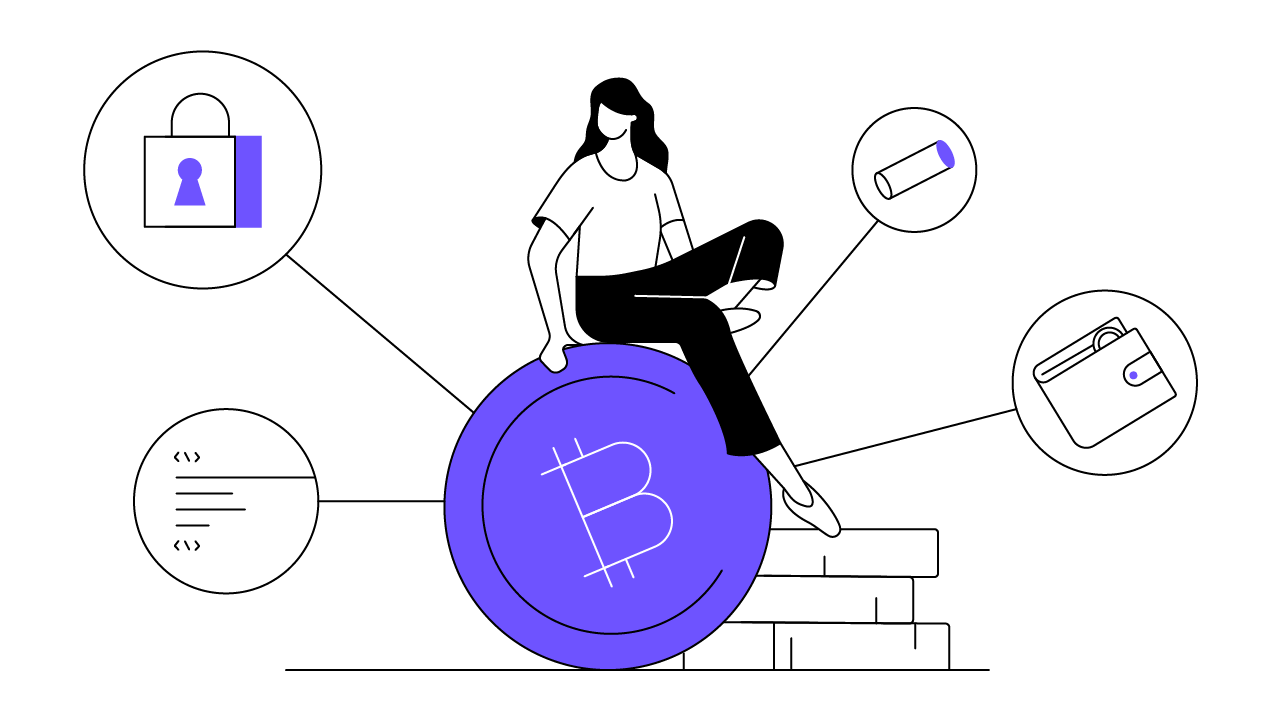Contents
Stellar (XLM): Powering Borderless Financial Systems
Stellar was built for speed and scale to further financial access and inclusion across borders.
By Denelle Dixon, CEO & Executive Director, Stellar Development Foundation
Updated October 5, 2023 • 4 min read

Summary
Stellar is a decentralized, open blockchain network that connects global financial infrastructure. As a mature chain, with live use cases easily bridging the digital and fiat worlds, Stellar has more than 4.8 million accounts — and has processed more than 1.5 billion operations since its launch in 2015. On the Stellar payment network, businesses and developers benefit from near-instant settlement and transaction fees of fractions of a cent.
Stellar Network (XLM): Setting a New Global Payment Standard
Each year, billions of U.S. dollars in value are transferred across borders, most notably through personal remittances. Most often, these remittances are sent on a monthly basis as transfers from foreign workers to family members in their home countries. Not only do remittances support millions of families, they also make up a significant portion of the GDP in low- and middle-income countries.
But in today’s financial system, sending these vital remittances is far from simple, and is not a borderless experience. Historically, these payments have suffered from long processing times and high fees — with a typical transaction costing around $200-to-$300, incurring an average retail cost of around 7%-to-8% of the remittance total (and as high as 15% when transferring money to people in developing economies), and taking days to settle. In short, today's system is fraught with slow speeds, cumbersome processes, and high fees that leave millions of people marginalized.
The Stellar network was designed and built to reduce the friction that exists today in a way that both furthers financial inclusion and sets a new global payment standard, so that where you live — and what you have — can no longer prohibit you from participating in the financial system. With the Stellar network, sending payments anywhere in the world can be as easy as sending an email.
This is possible thanks to the speed and scale of the Stellar blockchain. It allows users to exchange between fiat and digital currencies through anchors — that’s the Stellar term for the regulated financial institutions, money service businesses, and financial technology (FinTech) companies that issue 1:1 fiat-backed stablecoins and provide on/off ramps into local payment systems. Anchors help create a world where the existing financial system is connected to, and interoperable with Stellar. This enables users to send and receive money quickly and transparently, while avoiding the fees and latency traditionally associated with cross-border and cross-currency remittances. This is already happening live on the Stellar network. With Stellar anchors such as Saldo, when an unbanked person needs to send foreign currency back home to a family member who needs to use it as local currency, they can do so using an easy application. This is all possible without needing prior knowledge of, or familiarity with, blockchain.
It’s just as impactful for business-to-business (B2B) cross-border payments. For example, Cowrie Integrated Systems, a FinTech company with headquarters in the United Kingdom and offices in Nigeria, provides value-added services over electronic payment networks. Cowrie, knowing too well the friction their business customers encounter sending money to vendors and partners, has designed a payment channel to leverage USDC, one of the world’s leading dollar-collateralized stablecoins, as a bridge currency to help businesses with payments to and from Europe. Working with Tempo, an electronic payments institution based in France and the issuer of EURT — a euro-backed stablecoin also pegged 1:1 to fiat reserves — Stellar is building a bi-directional channel for customers to redeem and trade these stablecoins quickly.
Powered by the Stellar Consensus Protocol (SCP)
How can Stellar manage to do this? In part, due to Stellar’s underlying consensus mechanism, the Stellar Consensus Protocol (SCP). Fast, transparent, and smooth transactions on Stellar are processed and verified by a protocol that allows network participants to reach consensus via voting, rather than by mining. The nodes that uphold and verify the network work in unison to maintain the common distributed ledger, and to verify and add transactions to it. To do that, they rely on SCP, which is neither Proof of Work nor Proof of Stake, but rather uses a system of federated agreement to achieve consensus. Nodes select other nodes that they deem trustworthy, and work with them to craft and ratify a set of valid transactions to change the state of the ledger. Those in turn identify other reliable nodes, ultimately reaching network consensus through a quorum.
Another point of distinction is that the SCP provides users with a decentralized and efficient network. Typical mining processes are associated with large financial costs and high energy requirements, some relying on servers to the point of unsustainability. Transactions verified via the SCP are processed quickly — in three-to-five seconds on average, with the possibility of thousands of transactions occurring simultaneously — making the Stellar network a fast, sustainable, and convenient payment solution for cross-border transactions.
Enhanced by Stellar Network’s Built-In Features
SCP, paired with Stellar’s application programming interface (API) Horizon and the growing tools and products available to the ecosystem, creates an environment where it’s easy for businesses and developers to build on the network and leverage its most compelling features, like:
Speed: Transactions on the Stellar blockchain are confirmed in three-to-five seconds.
Cost: The cost per transaction (regardless of the size of the transaction) is negligible, and in 2021 averaged a little more than 0.00001 lumens, or XLM (Stellar network’s cryptocurrency). Fees, which are set by the protocol, are burned because they exist only to deter bad actors.
Asset issuance: Stellar’s supporting code is reliable, vetted, and fast, and tokens can be issued in just a few lines of code.
Decentralized exchange: Stellar has common built-in order books called the Stellar Decentralized Exchange, so every token is exchangeable, and the Stellar protocol itself connects buyers and sellers.
Compliant: Stellar is a leader in compliance, with built-in features that allow unified Know-Your-Customer (KYC) and Anti-Money-Laundering (AML) processes, asset control at the protocol level, and issuer-enforced finality.
Developer tools: Stellar’s open-source developer resources provide comprehensive documentation, software development kits (SDKs), and tutorials.
Sustainable: Because of Stellar’s consensus mechanism, the network costs as much as running a server and, unlike mining, resource requirements are low.
A native coin: Stellar created a native network currency lumens, or XLM, as a non-discriminatory solution to prevent spam on the network. Anyone who uses Stellar is required to keep a small amount of Stellar lumens in their account, and everyone has equal access to it. The XLM coin requirement is low enough to keep Stellar accessible, but deters frivolous and malicious actors from engaging with the Stellar network at a rampant scale.
Stellar Blockchain: An Interoperable, Connected Financial World
Stellar strives to set a new global payments standard. To do that, it was built for interoperability, connecting the existing financial system and payment rails with new digital ones so that value can flow seamlessly across borders.
It’s been decades since the current financial system was modernized. Blockchain technology is challenging us to think about money and value in a new way, presenting the opportunity to make it more effective and efficient. In much the same way that the internet democratized access to information, blockchain technology democratizes access to the financial system.
Stellar blockchain technology can connect financial infrastructure no matter where you are in the world so that systems and forms of value can be interoperable. With that comes greater access and inclusion, building toward a world where equitable access is not a privilege, but a right. That’s the power of Stellar.
Cryptopedia does not guarantee the reliability of the Site content and shall not be held liable for any errors, omissions, or inaccuracies. The opinions and views expressed in any Cryptopedia article are solely those of the author(s) and do not reflect the opinions of Gemini or its management. The information provided on the Site is for informational purposes only, and it does not constitute an endorsement of any of the products and services discussed or investment, financial, or trading advice. A qualified professional should be consulted prior to making financial decisions. Please visit our Cryptopedia Site Policy to learn more.

Author
Denelle Dixon
CEO & Executive Director, Stellar Development Foundation
Denelle Dixon is the CEO and Executive Director of the Stellar Development Foundation, a non-profit organization using blockchain to unlock the world’s economic potential by making money more fluid, markets more open, and people more empowered. Before joining Stellar, Dixon served as COO of Mozilla, one of the most successful mission-driven open-source organizations. During her tenure at Mozilla, she led the organization’s business, revenue and policy teams including the ongoing fight for Net Neutrality and the global effort to ensure that people can control their personal data. She also pushed Mozilla to understand how to partner with commercial entities while staying true to its core mission of openness, innovation, and opportunity on the web. A lawyer by trade, Denelle previously served as a general counsel and legal advisor in private equity and technology.
Is this article helpful?


